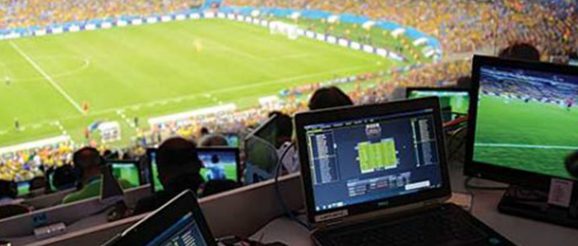Innovation In Media – Is Sports Audio The Next Battleground? – Which-50

Earlier this week, New Zealand media start up Spalk announced it had raised US$3m of capital in a round led by prominent sporting identities such as the Greg Norman Company, New Zealand born NBA star Steven Adams and Formula E driver Mitch Evans. The round also included traditional investment houses with participation from Icehouse Ventures and Stadia Ventures.
Now headquartered in New York, the virtual sportscasting studio is an enterprise software solution designed to help broadcasters, sports leagues and teams deliver multiple commentary options for their live sports streams and create a customised viewing experience for audiences, all while reducing broadcast production costs.
At a lower production cost and with more specific audience demographics, alternative commentary sources appear to offer a unique innovation in media, creating a way for brands to circumvent the ever increasing scale and restrictions of sports broadcasting rights deals and go straight to a similar personalised experience, similar to podcasts.
With a more intimate environment, better targeting and the size of the podcast deals signed by the likes of Joe Rogan, The Ringer and others, it’s no wonder the broader audio space is believed to offer such potential.
Live In The Moment
In this age of on-demand everything, live sport is one of the last great platforms of the linear viewing era, true ‘event television’ which can guarantee eyeballs. Watch it on delay and you miss out.
Its why live sports and the outsized broadcasting deals the medium attracts remain a key driver in both free-to-air and pay-TV plans, but the balance of power is shifting. New research from Parks Associates finds 55% of pay-TV households in the U.S. report availability of live sports is important in their decision to keep their pay-TV service.
Despite this, major pay-TV operators Comcast Cable, AT&T U-verse, DirecTV, Disney Network and Fios Video lost more than 5.6 million combined video subscribers in 2020.
It hasn’t stopped the value of the deals though, just changed their makeup. The National Football League is one global sports league which has long made a killing from its TV agreements, setting the bar even higher in recent negotiations.
In March of this year, the NFL signed an 11-year deal with broadcast partners which will be due to start in 2023, at a price tag of more than US$100 billion.Traditional sports media powerhouse ESPN was part of the mix, along with traditional NFL broadcasters Fox, CBS and ABC.
However, in what signals a slight changing of the guard, Amazon Prime Video managed to secure their own exclusive coverage, locking in a number of “Thursday Night Football” broadcasts.
It wasn’t long ago that live sports being exclusive to streaming felt like a vision of a far-off future, secure in the networks stranglehold as a perpetual linear TV institution. But the writing is on the wall.
Even the traditional players are changing their approach. As part of the mammoth NFL deal, NBC will simulcast games on its Peacock streaming service. CBS will do the same with Paramount+. ESPN+ is getting one exclusive international game per year.
Love For The Fans
While the number of media players bidding for these rights continue to increase, the focus sharpens around maximising value for fans.
In 2020, Deloitte recognised the importance of enhancing digital fan engagement as a key success pillar in the future of sports broadcasting. The single most important factor for audiences remains the quality of the broadcast or stream, however sports fans who stream also value viewer controls and functionality such as the ability to select the main view or announcer set for your stream.
Anyone who has listened to Phil Gould’s constant criticism of referees or witnessed Hamish McLachlan’s feeble attempts to be one of the blokes has likely reached for the mute button on more than one occasion.
Viewers want options. Why not present them with alternative audio, on their terms?
Festival of the Boot
If it sounds like this has been tried before, it kind of has. In years past, radio personalities Roy and HG Nelson released simulcast commentary for various significant sporting events including both the NRL and AFL Grand Finals through their program, The Festival of the Boot.
Deploying an entertaining mix of in-jokes, anecdotes, razor sharp wit and endless charm, the broadcast was a regular hit and a welcome relief from the insufferable antics of the mainstream commentary teams. It was edgy yet (mostly) family-friendly, accessible and inclusive. If only we could say the same for what we hear through the TV.
Now, through the promises of companies like Spalk, live sport could be ready to take the lessons from the past and embrace the next generation of digital consumption.
